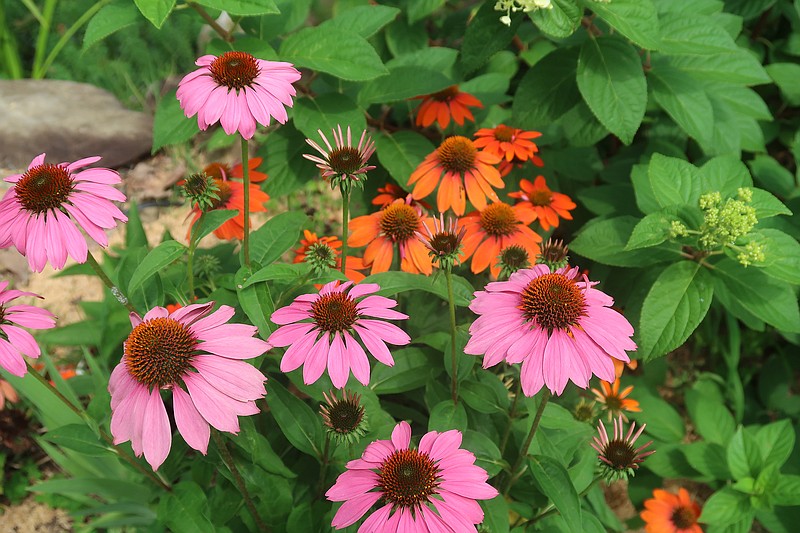AUGUST
We have seen some record-breaking heat this summer, and many parts of the state dry and humid. August is often our hottest month, so be prepared.
As in most summers, what rainfall comes tends to be spotty. Make sure you have a rain gauge and monitor what falls in your yard.
While watering seems to be the primary gardening chore in most gardens, there is no exact formula for how much or how frequently you need to water. There are many variables, from the type of plant, amount of sunlight and soil type. Most gardeners learn from experience what is needed to keep their garden thriving or at least living during hot, dry times.
If you have the option, watering early in the day can get plants better prepared for the coming heat; but some plants will wilt every day in extreme heat anyway. Slow, deep watering is best.
◼️ August is a great time to take inventory in your garden. What is doing well, and what isn't? Some vegetables are thriving, and others are simply lingering.
◼️ August and September are transition months in the vegetable garden. You can replant most warm-season crops for a fall harvest and gradually begin planting for a fall garden, too. I don't have to tell you that water will be important to get new plants established. Mulching can help as well.
◼️ Insects and diseases build up as the season progresses. Walk your garden regularly. The sooner you spot a problem, the faster you can control it. If an annual plant or vegetable is eaten up with insect or disease damage, pull it and destroy it. Replant something else.
◼️ Squash bugs and stink bugs are difficult to kill late in the summer. Look for their eggs on the surface of the leaves and destroy them before they hatch. Consider laying some leftover melon rinds in the garden at dusk to trap them so you can destroy them first thing in the morning.
◼️ Aphids and spider mites tend to multiply the drier it gets. Wash off your plants, or try using an insecticidal soap.
◼️ Summer color in the form of annuals and tropical plants can add a lot of color to a landscape or patio. In containers, they need daily watering, especially if they are in full sun. With daily watering, nutrition leaches out of the soil. Regular fertilization can keep them blooming at peak performance. But fertilizing when it is hot and dry can burn tender plants. Make sure you water your plants before and immediately after fertilizing to give them a nutritional boost without a burn. Apply your fertilizer at a lower rate than normal. You can always add more.
◼️ Speaking of adding more, most nurseries and garden centers still have color options out there. If you have areas that need replanting, sometimes you can find bargains this time of year.
◼️ Spring-blooming trees and shrubs are beginning to set flower buds for next year. Make sure you don't let them become too stressed by dry conditions. At this point, don't do any pruning, and fertilization is not needed either. Water is the only thing that can help.
◼️ Continue to deadhead perennials and even some shrubs. Butterfly bush (Buddleia), summer spirea and even crape myrtles will continue to bloom if you remove the spent flowers, preventing seed set. Basil needs to be clipped to keep its foliage growing, and black-eyed Susan (Rudbeckia), purple coneflower (Echinacea) and gaillardia will all set seeds if you don't clip them — and you want more flowers.
◼️ Lawns are the sure sign of who is watering and who isn't, based on how green the grass is. Even if you are watering, lawns are not growing quite as quickly as they were a few weeks ago. Regular mowing is still needed, but you can raise the height of the mower. In this heat, try not to remove more than a third of the grass blades at a time or you can shock the lawn even more. Be careful about applying herbicides when it is hot and dry, or they, too, will cause injury to desirable plants.
Janet Carson's blog is at arkansasonline.com/planitjanet.

